Embroidery stitches for filling areas
Here are some embroidery stitches I use regularly for filling areas
In the sampler below, you can see the different embroidery stitches I like to use for filling areas. Every stitch has its advantages and weaknesses. There are some all-rounders in there (e.g. chain stitch, seed stitch), but neither of them is THE perfect stitch for everything.
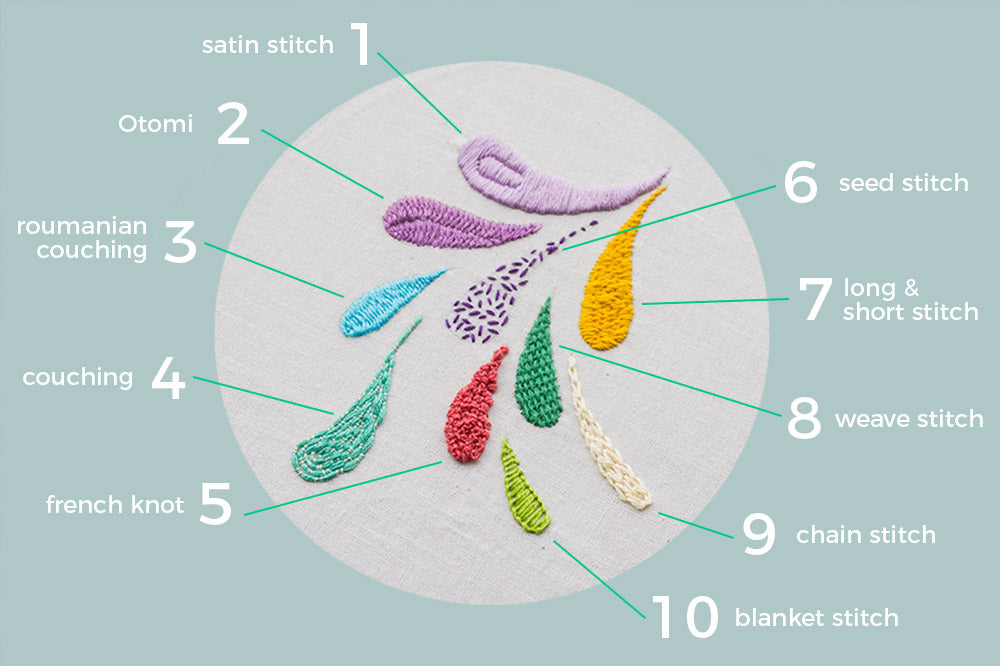
These 10 embroidery stitches are great for filling:
- satin stitch
- Otomi
- roumanian couching
- couching
- knots like french knot or colonial knot
- seed stitch
- long & short stitch
- weave stitch
- chain stitch
- blanket stitch
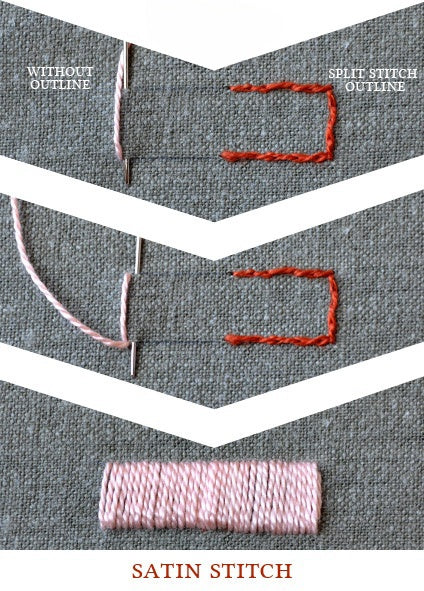
Satin stitch for a smooth surface
Satin stitch is the perfect embroidery stitch for filling small and medium-sized areas. The size it can cover depends on your materials, too. If you are using a very thick thread and stiff fabric, you can go larger. If your fabric and thread are very delicate you might need to go smaller.
In the sampler above, I added a smaller shape inside the drop to avoid stretching the satin stitches too long.
Stitch Properties
- very smooth surface stitch
- works for areas of 0.5-3cm
- adaptable to any shape
- uses a lot of thread on the backside
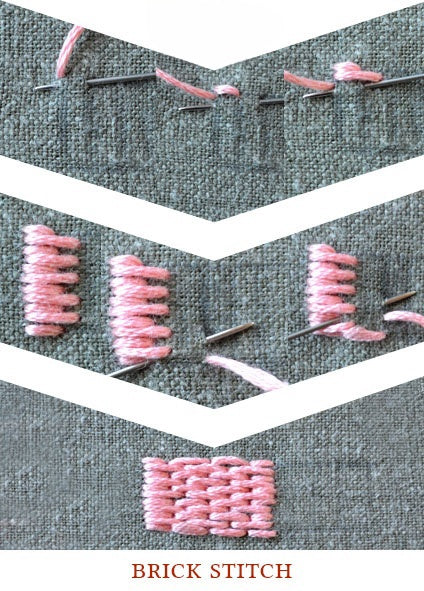
Long and short stitch for filling large areas
Long and short stitch is one of the stitches that can be used for any size or shape in embroidery. You can use it for slimmer shapes like ribbons or letters and fill areas as big as you wish.
This stitch is also used for needle painting – a technique to blend in colors with each other to create the look of a gradient.
Stitch Properties
- smooth surface stitch
- perfect for any size
- adaptable to any shape
- uses a lot of thread on the backside
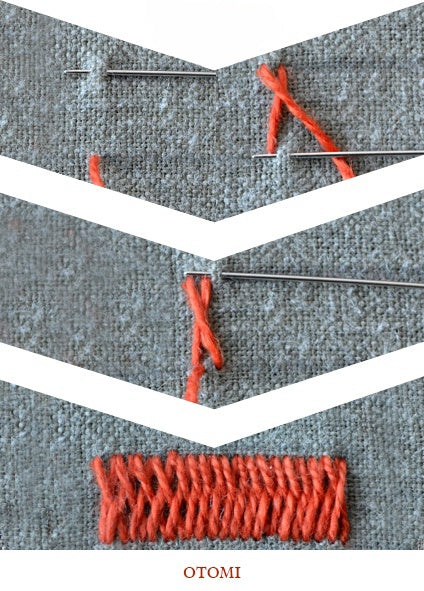
Otomi as a thread saving filler stitch
The technique of Otomi embroidery uses a very closely worked closed herringbone stitch. It is traditionally worked over a longer length than the usual herringbone stitch. Because the herringbone stitch crosses over the previous stitches it makes a very stable construction.
However, there are still limitations in length and thus Otomi is worked in multiple rows to fill very large areas. You can see in the sampler above how I filled the widest area with two rows instead of elongating the first row to the maximum.
Stitch Properties
- smooth surface stitch
- is worked in rows to cover very large areas
- adaptable to any shape
- uses a very little thread on the backside
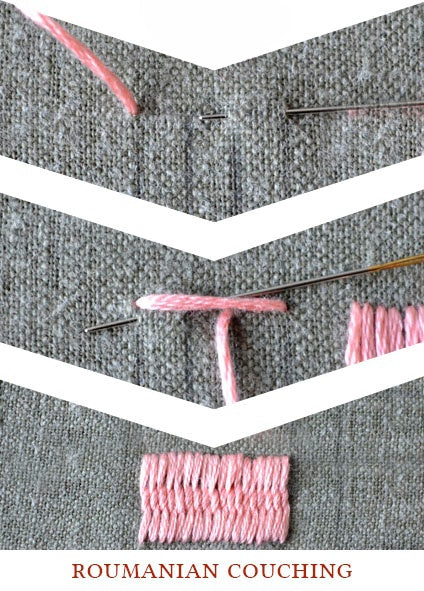
Roumanian Couching for filling large areas
Roumanian Couchingis basically a satin stitch that is tacked down in a certain way. You can cover larger areas than the satin stitch with this embroidery stitch.
Stitch Properties
- smooth surface stitch
- works best for simple shapes
- not good for narrow areas
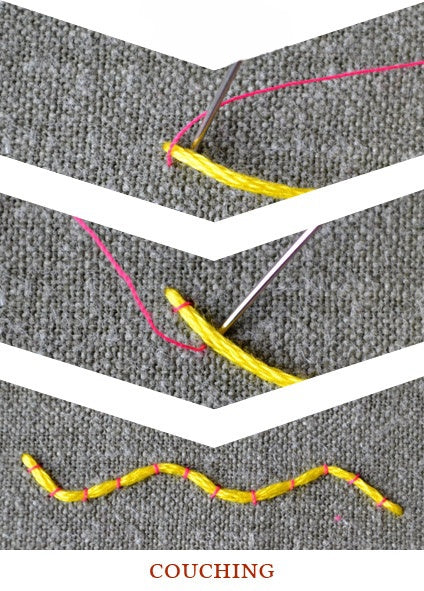
Couching for specialty threads
Forcouching, you’ll need two threads. One is the base thread, the second attaches the base to the fabric. Since the base thread lays on top of the fabric all the time, it’s often laid in spirals to cover larger areas.
Stitch Properties
- smooth surface stitch
- can cover any size
- can be worked with two colors
- works for any shape
- uses very little thread on the backside
- can be used with specialty threads & other materials
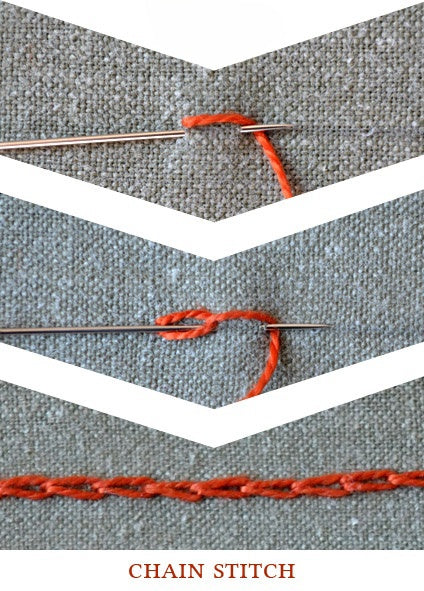
Chain stitch
Chain stitch as an allrounder for filling large and small areas
Chain stitch is often used for lines, but due to its thickness, it is perfect for filling areas of any size, too! It can adapt to any shape and size.
Stitch Properties
- looks like chain mail or knitted
- can cover any size
- adaptable to any shape
- uses a medium amount of thread on the back side
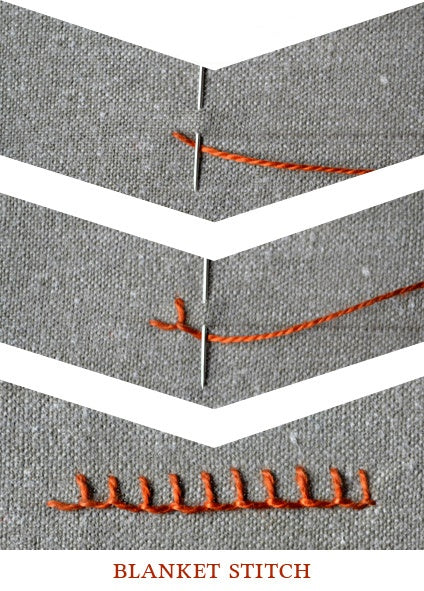
Blanket stitch
Blanket stitch can be worked as an open or closed stitch. Depending on how much of the fabric you want to cover you can adjust the space between each stitch. This embroidery stitch works best for squares or shapes that don’t have many angles – like ovals, circles, or ribbons.
In the sample, I embroidered the blanket stitch to one end, around the curve of the drop shape, and worked the way back on the other side. Doing so creates a continuous outline stitch around the shape.
Stitch Properties
- creates a smooth surface when worked very closely
- can cover any size
- works best for squares, ovals, circles, and ribbons
- uses a medium amount of thread on the backside
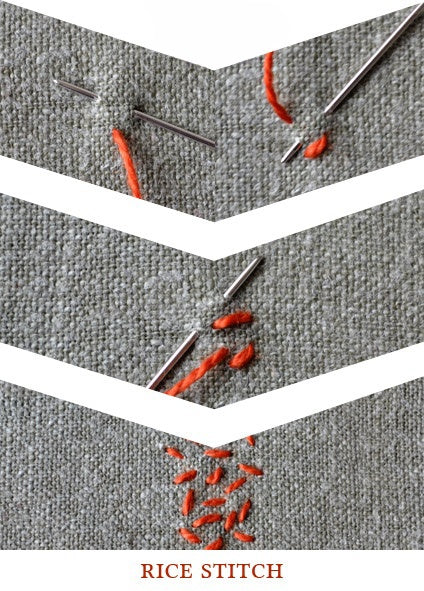
Seed stitch for a sprinkle of threads
Seed stitch or rice stitch is a set of chaotically stitched embroidery stitches to fill out an area. You can leave them spread out widely to only cover very little of the fabric or set them very close.
Stitch Properties
- looks like scattered rice grains
- can cover any size
- works for any shape
- uses a medium amount of thread on the back side

Weave stitch for that extra texture
Weave stitchis a very interesting way to fill an area. It produces a woven texture and technically you can use many weaving techniques, not just the regular up and down shown in the tutorial here.
Stitch Properties
- looks like a woven patch
- can cover medium-sized areas
- adapts to many shapes
- two color option
- uses a medium amount of thread on the backside
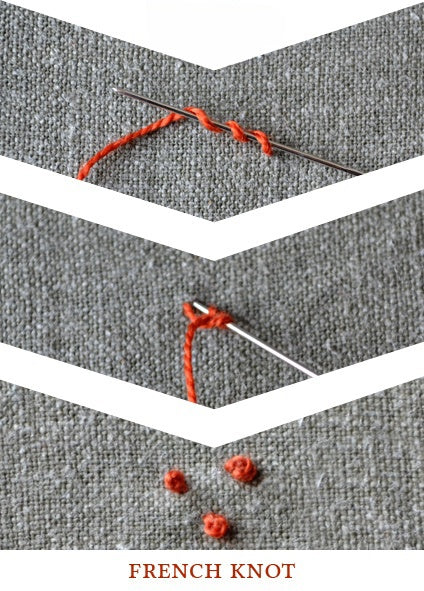
Knots for more dimension
Knots add a lot of dimension to your embroidery. I choose thefrench knotand the colonial knot for the tutorial here. Both are excellent embroidery stitches to fill areas. They look quite similar. The French knot is rather like a ball sitting on the fabric while the colonial knot is sitting flatter to the ground.
Stitch Properties
- very textured
- can cover any size
- adapts to every shape
- multiple color option
- uses a medium amount of thread on the backside
Summary: embroidery stitches for filling areas
Now, I have bombarded you with 10 different embroidery stitches for filling areas. Which one works best for your project? That is for you to decide. To make things easier, you’ll find a list below that says which stitches work great for which purpose.
